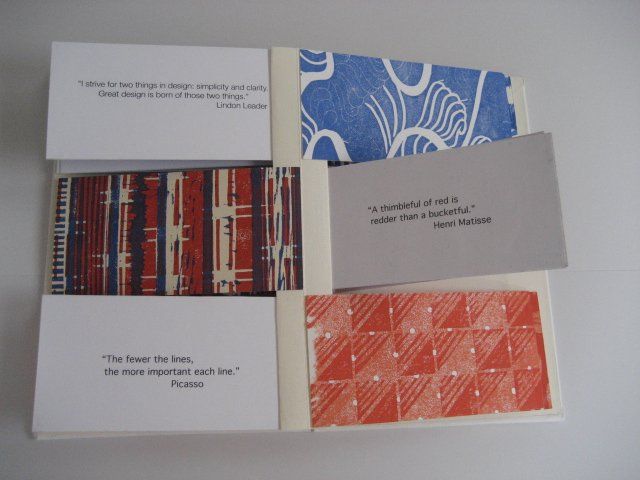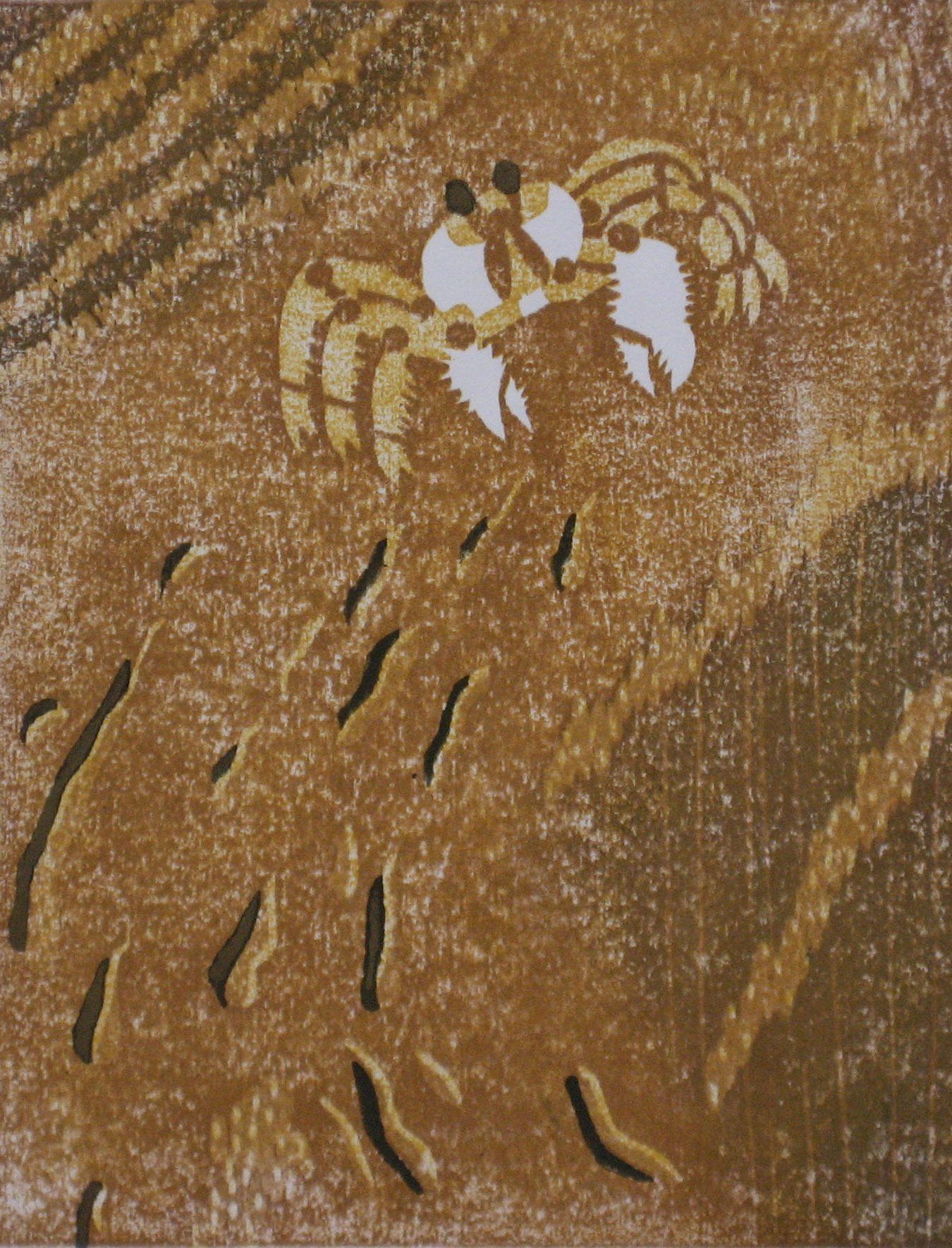MOKUHANGA - ARTIST BOOKS - EARLY WORKS
A few years ago I became interested in book arts. I enjoy creating Zuancho
or 'picture' books for kimono textile designs. Picture books can be viewed without language or cultural barriers. Before WWII, skilled craftsmen carved textile designs into woodblocks and printed them for the kimono trade. Volumes of hand-bound books with mokuhanga
designs were shown to the client, where they selected fabrics for their custom-made kimono.
Zuancho
translated: zu
- design, an- idea, cho
- book.
"Flag Book" has 13 pages of relief printed designs and my favorite art quotes (a few below)
divided into 3-sections for viewing with many different combinations.
“It is a free craft, for the artist is his own engraver, printer, and publisher,
producing by hand single prints, no two alike.” Arthur Wesley Dow
“As flame begets light, so light engenders colors.
Colors are the children of light, and light is their mother.” Johannes Itten
“The fewer the lines, the more important each line.” Picasso
“It's not easy being green.” Kermit the Frog, Muppet
"Rice Crop Circles" is a collaboration with Kristen Kavanaugh. I met Kristen when we were members of Women Printmaker's, Austin, Texas. Kristen makes beautiful hand-made papers in her paper-making studio. I carved the wood book covers, designed, and printed each page with mokuhanga, using Kristen's hand made paper.
Edition of 5
"Hieroglyph" is a scroll book printed with pochoir (stencil) on paper from Basler Papiermuhle, Basel, Switzerland.
11" x 101"
EARLY WORKS
In 2007, the Nevada Art Council awarded me a 'Jackpot Grant' to attend the New York Botanical Garden Orchid Show, where I sketched, photographed and made notes about the exhibit. Returning to my studio, I had three months to design, carve and print these images. Most woodblocks were 9.5" x 9.5", with several images requiring five or six color blocks each.
Wearing "Happi
Coats" to work was an everyday experience that prepared the Japanese worker for the task at hand. They were protection as well as advertisements for their profession. Happi
Coats were also worn for special occasions such as store openings and Festivals. Most were made of cotton. Six feet of fabric is needed to make a traditional Happi
Coat. Firemen often wore Happi
Coats made of leather for protection from the heat. I created Happi
Coat designs for construction workers and fishermen. These woodblocks were carved from cherry wood, difficult to carve, but is easy to print. Five from this series is in the Renown Hospital Art Collection, Reno, Nevada.
The "Sea Shore Series" was printed with mokuhanga, water-base woodblock, using a western woodblock technique, ‘reduction’ printing. I use this process with either one or two blocks of wood for each image. White areas of the image are carved out of the wood to allow for the white color of the paper to show. A light color is the first color printed. I carve away the wood where I want the light color to show and print a second color, and continue the process until all the colors are printed in the edition. When I use two blocks of wood, one block is for warm colors or light values and one block is for cool colors and darker values. This technique is more difficult because I do not always know exactly how the colors will mix until the print is ‘pulled’. There is no going back. A set of eight unframed mokuhanga
prints are in a clamshell box for easy viewing.








































